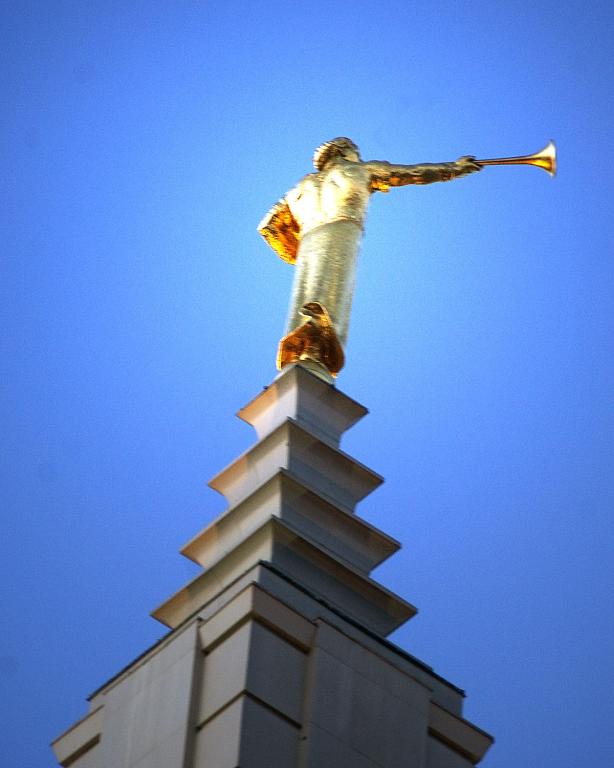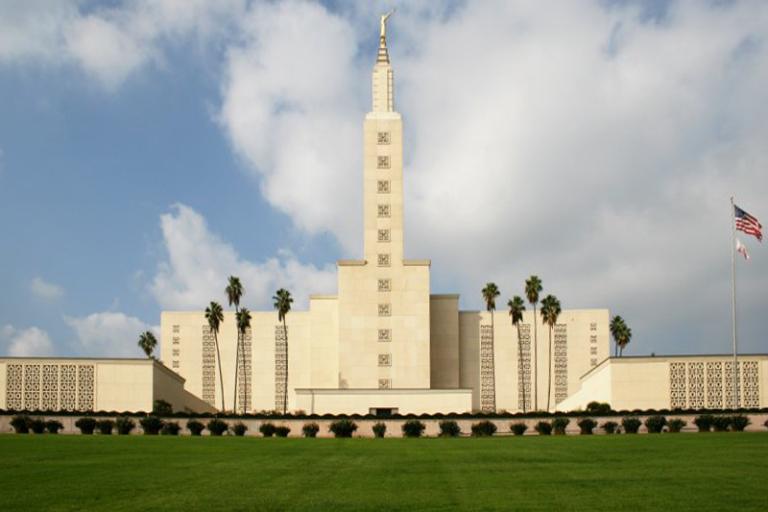
A new Interpreter Foundation video short was posted earlier today. Entitled “The Book of Mormon Came from Somewhere!” it features Professor Steven C. Harper of Brigham Young University:
Please give it a quick look and, if you like what you see, please share it with others! We want to get these out among the people.
Incidentally, while I’m at it, did you see Professor Harper in the still fairly recent Scripture Central video “Who Actually Saw the Gold Plates? | A Marvelous Work Episode 5”? If you didn’t, I commend it to your attention. It’s definitely worth watching.

We took our friends to visit the Los Angeles California Temple today. We had hoped to do a session there, but things just didn’t quite work out. As I’ve explained here before, it was my temple as I was growing up, and it is where my parents and my family were sealed. Afterwards, we took our friends for a very brief visit to the Pierce Brothers Westwood Village Memorial Park, which is only a few blocks away.
It’s a pretty amazing little place. We didn’t have much time, and I’m fully aware that I missed the “last resting places” of many more “celebrities” than I saw, but, even so, just strolling around a bit for a few minutes, I came across the graves or crypts of Jim Backus (1913–1989), actor; Peter Bogdanovich (1939–2022), director and screenwriter; Ray Bradbury (1920–2012), author; James Coburn (1928–2002), actor; Ray Conniff (1916–2002), musician; Bob Crane (1928–1978), actor and murder victim; Rodney Dangerfield (1921–2004), comedian, actor; Kirk Douglas (1916–2020), actor; Ariel Durant (1898–1981) and Will Durant (1885–1981), husband and wife, historians, Pulitzer Prize in literature, co-wrote The Story of Civilization; Farrah Fawcett (1947–2009), actress; Merv Griffin (1925–2007), producer, television host, singer; Armand Hammer (1898–1990), oil tycoon, art collector, former president of Occidental Petroleum; Burt Lancaster (1913–1994), actor; Ed Lauter (1938–2013), actor; Dean Martin (1917–1995), actor, singer; Walter Matthau (1920–2000), actor; Gregor Piatigorsky (1903–1976), cellist; Dorothy Stratten (1960–1980), actress, Playboy Playmate, and murder victim; Natalie Wood (1938–1981), actress (and murder victim?); and Darryl F. Zanuck (1902–1979), head of 20th Century Fox studios, father of Richard D. Zanuck. And, of course, Marilyn Monroe (1926–1962), actress, and the umm, businessman Hugh Hefner (1926–2017), who paid a huge amount of money for the adjacent crypt.
Why go there? Well, rather curiously, I find cemeteries fascinating. I’ve spent many happy hours exploring such places as the Salt Lake City Cemetery and the astonishing Cimetiere Montparnasse in Paris. (Someday, I hope to devote some quality time to the much larger Cimetière du Père Lachaise.) The fascination largely derives, I think, from the fact that I find history of riveting interest. And such places are, as it were, monuments to history.
There is, however, another dimension, one that is related to the old and, these days, largely neglected notion of memento mori.
In ancient Rome, victorious generals were given a “triumph” or parade when they returned from battle. (You can watch a quite good Hollywood recreation of one of them in the classic 1959 film Ben-Hur.) They would display the spoils they had looted and show off some of the more prominent captives they had seized (e.g., the captured Syrian queen Zenobia; Cleopatra committed suicide rather than be led in triumph by Augustus Caesar). However, as a defense against the haughtiness and sense of grandeur that might result from the adoration of the audience, a slave would be stationed behind the general. “Respice post te,” the slave would repeat. “Hominem te memento.” “Look past yourself [i.e., to the time after your death] and remember that you’re [only] a man.”
The common Latin expression for this sort of thing is Memento mori (“remember that you have to die”).
Here is another illustration of it: From the coronation of Pope Alexander V in 1409 to that of Paul VI in 1963, the Latin phrase Sic transit gloria mundi (“Thus passes the glory of the world,” or, as one might reasonably paraphrase it,”fame is fleeting”) was a part of the installation of a new pontiff. As a newly chosen pope proceeded from the sacristy of St. Peter’s Basilica in his official sedan chair or sedia gestatoria, (literally “chair for carrying”), the papal procession would stop three times. At each stop, the papal master of ceremonies would fall to his knees before the newly-elected pope, holding up to him a silver or brass reed that bore a small piece of smoldering flax. As the flax burned away, he would say in a mournful but loud voice, “Pater Sancte, sic transit gloria mundi!” (“Holy Father, so passes the glory of the world!”). These words were intended to serve as a reminder to the pope of the transitory nature of earthly honor and, indeed, of life itself. Less than a decade after the coronation of Pope Alexander V, a form of the phrase also appeared in Thomas à Kempis’s classic 1418 work The Imitation of Christ: “O quam cito transit gloria mundi” (“How quickly the glory of the world passes away”).
Memento mori may seem a bit morbid — literally so — in our youth-obsessed and death-denying culture, but I think it can be quite healthy.
It is, or should be, thought-provoking to see how — borrowing examples solely from the little cemetery in Westwood — former titans of Hollywood and of business (e.g., Peter Bogdanovich, Armand Hammer, and Darryl F. Zanuck) and onetime glamorous movie stars (such as Marilyn Monroe and Kirk Douglas) and that supreme hedonist Hugh Hefner have been brought down in the end to little markers and a small patch of grass (or less) in a relatively obscure and seldom-visited graveyard surrounded by busy skyscrapers full of people who are giving them no thought at all. And the memorable performances and the great achievements are at an end; the stories are finished.
It seems appropriate, in retrospect, to have visited that peaceful, melancholy Westwood Village cemetery and the Los Angeles California Temple in such close succession. While the former testifies to the transience of human life and human glory, the latter points toward the continuation of human life amidst inconceivably greater glory and splendor. Far greater achievements are to come. Far grander accomplishments are ahead. The stories continue.
Posted from Newport Beach, California












